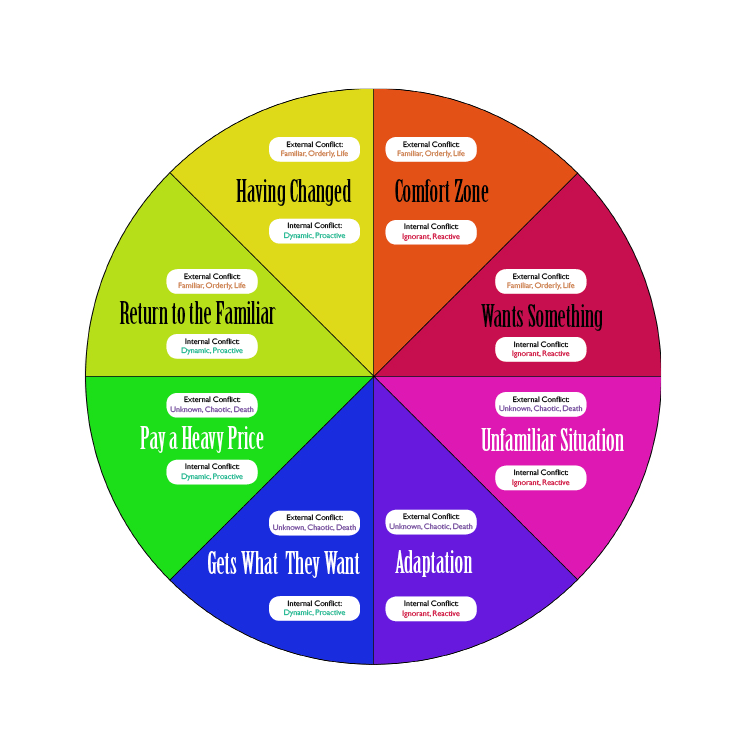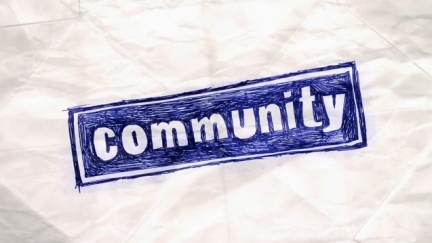I admit it: I just started watching Community. Yes, I know. Better late than never. I kept hearing how great the show was, but never got around to following it. Well, now, thanks to Hulu, I can binge watch while I’m cleaning house or laundry or whatever.
Lately, though, I’ve been hearing about this “Plot Embryo” for writers developed by Dan Harmon, creator of Community.
Harmon’s Plot Embryo

I decided to write twelve episodes for my series, Consortium, and I broke down each episode using Harmon’s method. The key is its simplicity. I re-worked each episode into the embryo, and will keep reworking them as I write.
Not only is it a way to outline a novel or short story, but–if the writer has already written a draft or two of it–it’s an excellent tool for evaluating what has already been written.
Defining each segment of the circle Simplified examples are the best teachers, so I’ve tried to plug in a familiar fairy tale to Harmon’s embryo.
- Comfort Zone (The Familiar)
Anchor the audience by showing who the protagonist is and show their world right before the craziness starts.
Jack is a boy who lives with his mother and a cow whose milk is a source of income. - Wants Something (The Familiar)
A need is established.
The cow’s milk dries up. Mother tells Jack to sell cow at the market. Jack sighs, gets up and takes off with the cow to the market. - Unfamiliar Situation (The Unfamiliar)
Protagonist crosses the threshold.
On the way, Jack meets a bean dealer and makes a trade: the cow for magic beans. - Adaptation (The Unfamiliar)
The protagonist faces trials and training to get what he wants.
Jack returns with no money, and his mother, furious, throws the beans out and sends him to bed hungry. - Get What They Wanted (The Unfamiliar)
The protagonist finds something with potential and meets “the goddess.”
Jack finds a gigantic beanstalk has grown so he climbs it and finds a castle. - Pay a Heavy Price (The Unfamiliar)
The protagonist meets his maker, takes what he wants, but pays a heavy price.
The giant returns to the castle; giant smells Jack; Jack hides; giant sleeps; Jack risks life by stealing a bag of coins and a magic goose before the giant wakes up. - Return to Familiar (The Familiar)
The protagonist goes back to the familiar situation where they started.
Jack climbs down the beanstalk with his goods, sees the giant climbing down after him, and chops down the beanstalk killing the giant. - Having Changed (The Familiar)
The protagonist is now capable of change.
The world of Jack and his mother is now one of wealth thanks to the money and the goose that keeps laying golden eggs. But Jack is now also a thief and murderer.
Here are some more resources to learn about the Plot Embryo:
- Dan Harmon, Story Structure 104 : The Juicy Details
- Gail Shepherd, Paradoxy blog, Dan Harmon’s Plot Embryo
- Writer Rachael Stephen talks about Harmon’s Plot Embryo in her writing YouTube series
Check Harmon’s Embryo against the beats from Save the Cat and other story patterns. See also Comparing Story Grids.
Subscribe to my newsletter for updates on my novels.


Leave a comment